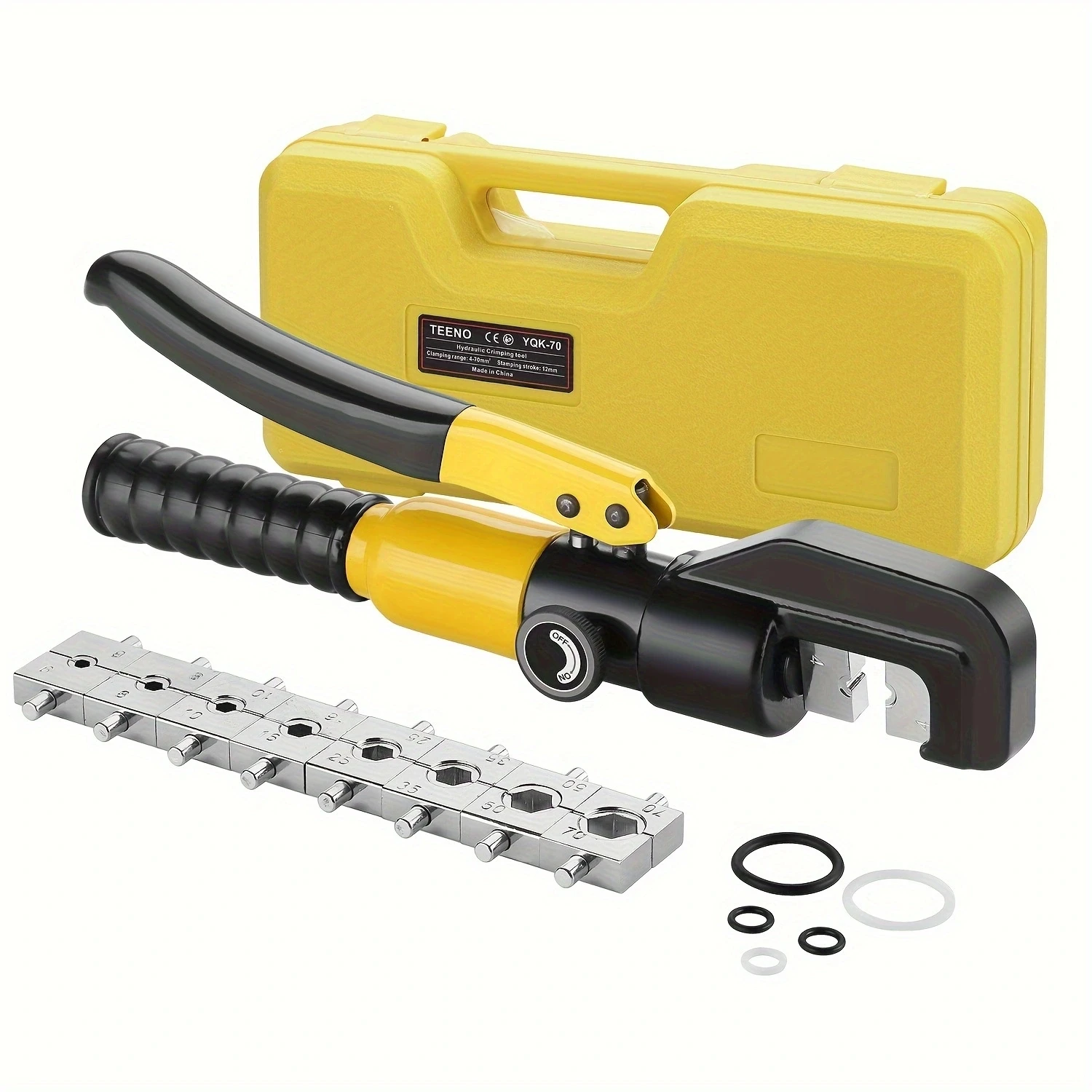Professional Hydraulic Crimping Tool: Superior Performance for Reliable Cable Connections
$55.26
Introducing the ultimate solution for efficient and professional cable crimping: the Hydraulic Crimping Tool 10T. With a wide crimping range of 12 to 2/0 AWG, this hydraulic hand crimper tool empowers electricians and technicians to handle various cable sizes with ease. Its precision-engineered design ensures secure and reliable connections, making it an indispensable tool for electrical wiring projects.
Hydraulic Crimping Tool: A Comprehensive Guide for Professionals and DIY Enthusiasts
Introduction
In the world of electrical wiring, crimping is a crucial technique for creating secure and reliable connections. A hydraulic crimping tool is a specialized device designed to apply precise and uniform pressure for crimping electrical terminals, lugs, and splices. With its exceptional power and control, this tool is widely used by professionals and DIY enthusiasts alike.
Understanding Hydraulic Crimping
Hydraulic crimping involves the application of immense force through a hydraulic system to compress a metal sleeve or connector onto a wire or cable. This process ensures a tight and permanent bond between the two components, resulting in a robust and long-lasting electrical connection.
Key Features of a Hydraulic Crimping Tool
Hydraulic System: The hydraulic system provides the necessary power for crimping. It consists of a hydraulic pump, reservoir, and hoses that transmit the pressure to the crimping head.
Crimping Head: The crimping head is the business end of the tool. It houses a set of crimping dies that are specifically designed for different types and sizes of terminals and lugs.
Pressure Adjustment: Most hydraulic crimping tools allow for adjustable pressure settings. This feature enables the user to tailor the crimping force to the specific requirements of the material being crimped.
Ratchet Mechanism: A ratchet mechanism ensures that the crimping force is applied gradually and consistently until the desired crimp is achieved.
Safety Features: To protect the user, hydraulic crimping tools often incorporate safety features such as overload protection and ergonomic handles.
Benefits of Using a Hydraulic Crimping Tool
Exceptional Crimping Power: Hydraulic crimping tools deliver immense crimping force, allowing for the secure and reliable termination of large cables and terminals.
Uniform Results: The hydraulic system ensures consistent and uniform pressure distribution, resulting in high-quality crimps every time.
Ease of Use: Compared to manual crimping tools, hydraulic crimping tools require less physical effort and are easier to operate.
Durability and Longevity: Hydraulic crimping tools are built to withstand heavy-duty use and offer a long lifespan with proper maintenance.
Safety and Reliability: The ratchet mechanism and overload protection features enhance safety and prevent damage to the tool and materials being crimped.
Applications of Hydraulic Crimping Tools
Hydraulic crimping tools are commonly used in various industries, including:
Electrical construction and maintenance
Telecommunications and data cabling
Industrial automation and robotics
Automotive and marine wiring
Solar panel installation and maintenance
Choosing the Right Hydraulic Crimping Tool
Selecting the appropriate hydraulic crimping tool depends on the following factors:
Capacity: The capacity of the tool refers to the maximum size and type of terminals or lugs it can crimp.
Crimping Range: This specifies the range of wire gauges or conductor sizes that the tool can accommodate.
Pressure Settings: Adjustable pressure settings allow the tool to accommodate a wider range of materials and applications.
Head Style: Different head styles are available to suit specific crimping requirements, such as closed-head or C-head designs.
Accessories: Some crimping tools come with additional accessories, such as crimping dies for different sizes and types of terminals.
Maintenance and Troubleshooting
To ensure optimal performance and longevity, it is crucial to properly maintain your hydraulic crimping tool. Regular maintenance includes:
Checking hydraulic fluid levels and replacing it when necessary
Lubricating moving parts
Inspecting crimping dies for wear and tear
Calibrating the tool periodically for accuracy
In case of any operational issues, refer to the manufacturer’s instructions for troubleshooting tips.
Conclusion
A hydraulic crimping tool is an essential investment for professionals and DIY enthusiasts who demand the highest quality electrical connections. With its exceptional power, precision, and ease of use, this tool simplifies the crimping process and delivers reliable and durable results. By understanding its key features and choosing the right tool for your needs, you can ensure safe and efficient electrical installations for years to come.



